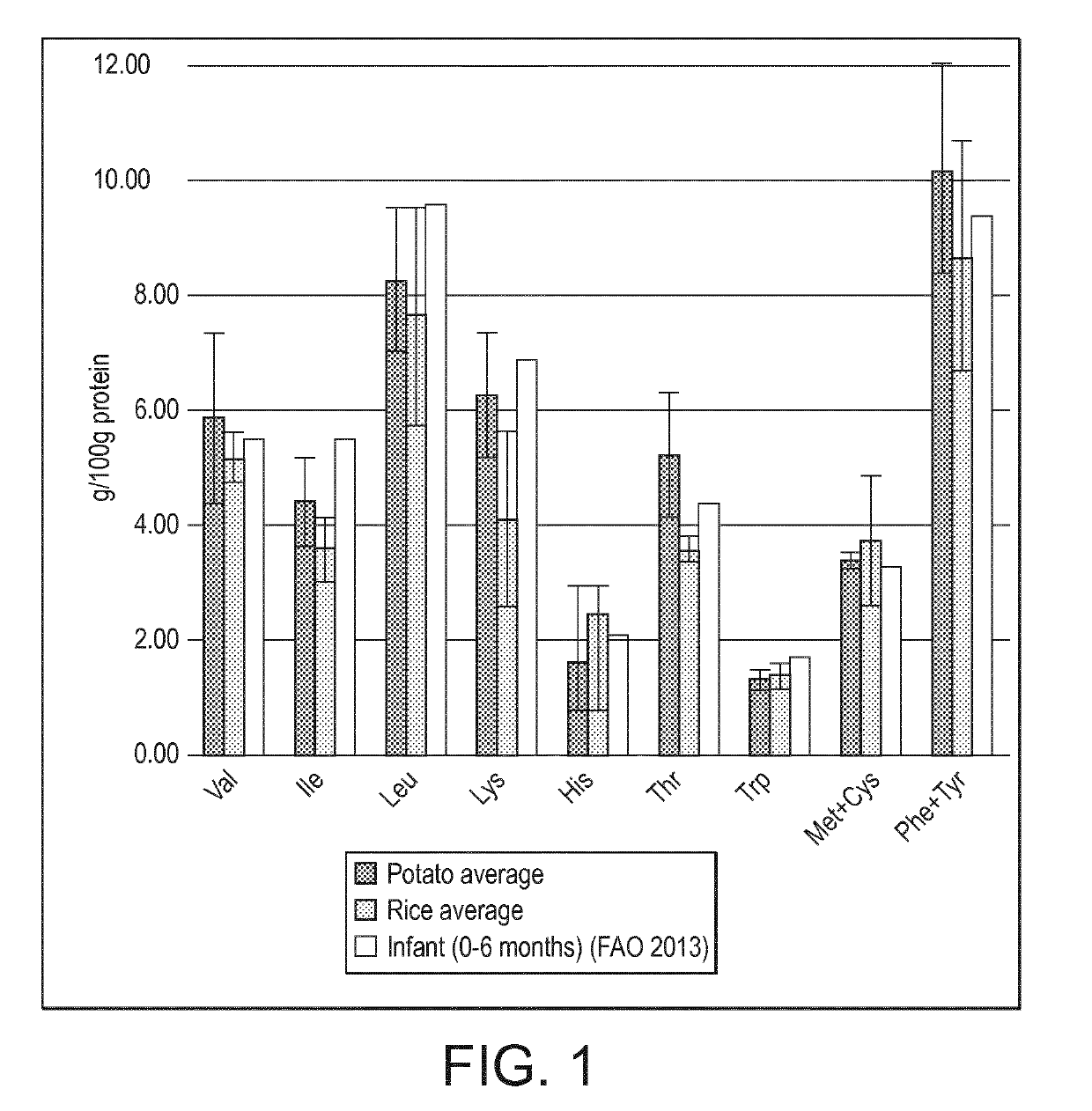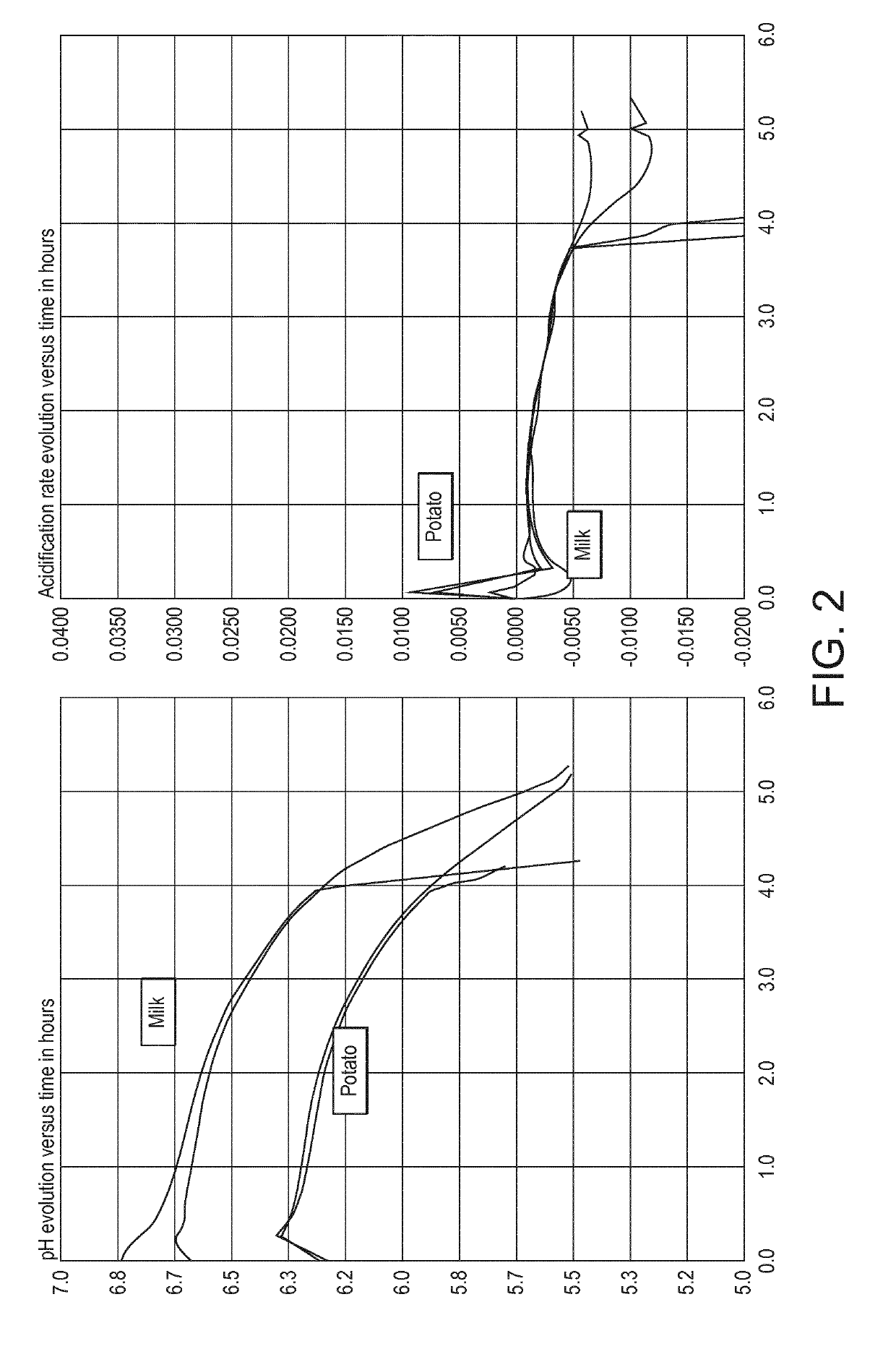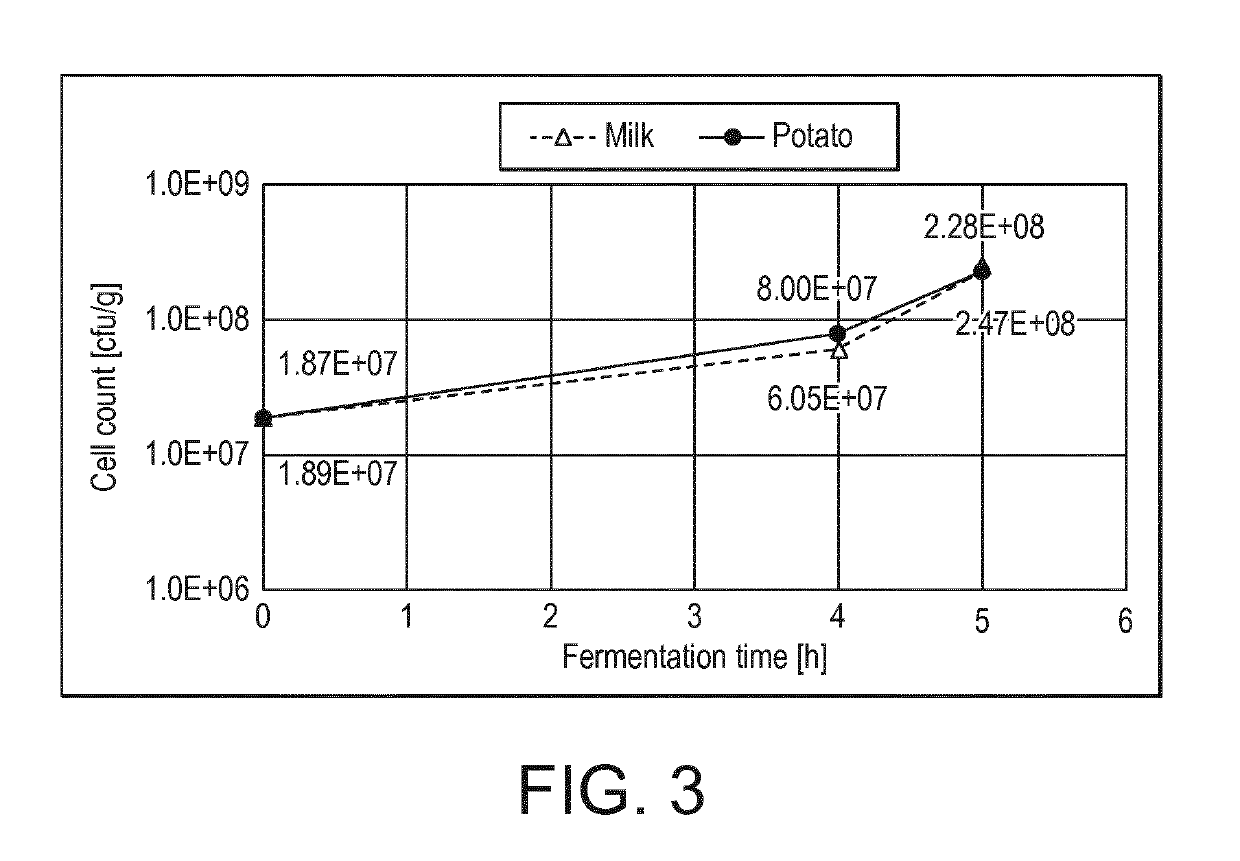Fermented nutritional composition for cow's milk protein allergic subjects
- Summary
- Abstract
- Description
- Claims
- Application Information
AI Technical Summary
Benefits of technology
Problems solved by technology
Method used
Image
Examples
example 1
al Comparison Between Potato Protein and Rice Protein
[0164]Potato protein contains higher levels of the following essential amino acids compared to rice protein (FIG. 1): valine; isoleucine; leucine; lysine; threonine and aromatic amino acids.
[0165]The concentrations of tryptophan and the sulfur-containing amino acids are similar between potato and rice proteins.
[0166]However, rice protein contains higher concentrations of histidine than potato protein.
[0167]Overall, the essential amino acid concentrations in potato protein are better than rice protein, and may require lower levels of additional amino acid fortification.
[0168]Potato protein contains more essential amino acids in compliance with the FAO 2013 recommendations compared to rice protein (Table 1).
TABLE 1Amino acid concentrations in potato and riceproteins that are complaint with the FAO 2013recommendations for 0-6 month-old infants.Amino acidPotatoRiceVal✓xIlexxLeuxxLysxxHisx✓Thr✓xTrpxxMet + Cys✓✓Phe + Tyr✓x
[0169]Although...
example 2
ion of Infant Formula with Potato Protein
Material and Methods
Lab Trial 1
[0178]The infant formula bases for two variants (reference and high (greater than 35 kDa) molecular mass potato protein fraction) were prepared by mixing the relevant protein with carbohydrate (lactose and maltodextrin) and fat sources, and with minerals.
[0179]A heat treatment of 72° C. for 15 seconds in a water bath was applied.
[0180]Skim milk (commercially available liquid skim milk) was used as the source of protein in the reference recipe.
[0181]The starter culture used was Streptococcus thermophilus ST496 (CNCM I-3915).
[0182]Fermentation was carried out in duplicate for both variants in 250 mL glass bottles placed in a water bath and monitored by a CINAC system (continuous measurement of pH and acidification rate). For one bottle of each variant the fermentation was stopped after 4 h. In the remaining two bottles, the fermentation was continued for an additional hour with the aim to reach a lower pH.
Lab Tria...
PUM
 Login to View More
Login to View More Abstract
Description
Claims
Application Information
 Login to View More
Login to View More - R&D
- Intellectual Property
- Life Sciences
- Materials
- Tech Scout
- Unparalleled Data Quality
- Higher Quality Content
- 60% Fewer Hallucinations
Browse by: Latest US Patents, China's latest patents, Technical Efficacy Thesaurus, Application Domain, Technology Topic, Popular Technical Reports.
© 2025 PatSnap. All rights reserved.Legal|Privacy policy|Modern Slavery Act Transparency Statement|Sitemap|About US| Contact US: help@patsnap.com



